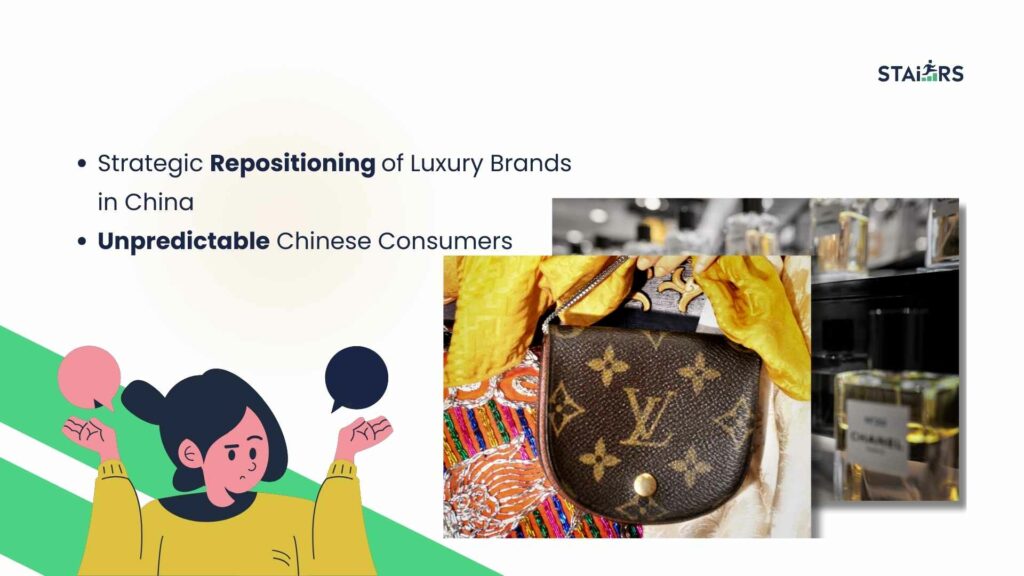China’s lower-tier or rural markets, often overshadowed by the glitz of megacities like Beijing and Shanghai, hold untapped potential for overseas companies. These markets, consisting of smaller cities and rural regions, are home to over 70% of China’s population.
The lower tier and rural markets have always been the mainstay of China’s consumer market. Especially after Covid-19, the trend of consumption downgrade among Chinese consumers has become very evident, with consumers’ sensitivity to prices increasing significantly.
Many domestic Chinese enterprises have adopted a downward development strategy. Therefore, the development and expansion of overseas enterprises in China’s market are also closely related to the lower tier and rural markets.
Understanding the Chinese Lower-Tier Market
1.The Rise of the Lower-Tier Market in China
China’s lower-tier cities and rural areas have seen a significant increase in purchasing power. These regions, previously overlooked by many international brands, now represent a substantial portion of consumer demand in the china’s market. Recognizing the untapped potential, companies like IKEA and L’Occitane have begun to shift their focus toward these markets.
2.The Trend of Consumption Downgrading in China
Consumption downgrading, where consumers choose lower-priced alternatives without compromising on quality, is particularly evident in China’s lower-tier markets. Here, consumers are highly price-sensitive but still seek value for their money. Brands that can provide affordable yet high-quality products are well-positioned to capture this growing segment in the china’s market.
An Expansion Project in China ? We Can Help You !
Case Studies
1.The O2O Revolution in China’s Beauty Market
The Online-to-Offline (O2O) concept has been around for a while. Back in 2018, Watsons launched its O2O transformation strategy, signifying a major adaptation to market changes. This model seeks to integrate offline stores with digital touchpoints such as WeChat mini-programs, offering consumers a seamless omnichannel experience.This strategy has not only improved customer retention and repeat purchase rates but also identified new growth opportunities in the digital era.

Sephora in the Chinese Market
Similar to Watsons, Sephora is accelerating its digital transformation. In 2022, Sephora launched a full-scale digital intelligence transformation, forming a “Digital Intelligence Innovation” team dedicated to optimizing the seamless integration of online and offline experiences. By expanding their online presence and opening futuristic concept stores, Sephora enhanced the shopping experience. They also enriched their exclusive and new brand offerings to increase market competitiveness.
Watsons in the Chinese Market
Watsons has deeply integrated its stores with mini-programs and corporate WeChat accounts through the O2O model, creating a more convenient and personalized shopping experience. Customers can place orders through the mini-program and choose either in-store pickup or home delivery, significantly enhancing consumer convenience. Additionally, Watsons maintains close interaction with customers through community operations, strengthening brand loyalty.
2.IKEA’s Low-Price Strategy in the Chinese Market
Lower Prices on Products, Food, and Services
In April 2024, IKEA opened its first low-cost boutique pop-up store in Shanghai, emphasizing “value for money” from logo concept to product pricing. Products are priced as low as 9.9 yuan, including items like kettles and large Rissa storage baskets in the china’s market.
Moreover, during March and April, IKEA (China) restaurants introduced discounted meals every Friday, humorously dubbed “poverty meals” by Chinese netizens. Examples include 1 yuan ice cream cones, 13.49 yuan spaghetti Bolognese, and 9.99 yuan meatball and mashed potato combos, attracting significant consumer attention and patronage in the china’s market.
IKEA’s price reduction strategy includes not only products but also food and services. This improves the consumer shopping experience with affordable meals and convenient delivery services. In February, IKEA announced an additional investment of over 100 million yuan. They lowered prices on more than 500 products, such as reducing the Forsa work lamp from 149 yuan to 99 yuan and the Brimnes three-drawer chest from 999 yuan to 799 yuan.
Affordable Pricing for Wider Market Reach
The core idea behind these measures is to attract more consumers through continuous price reductions in the china’s market. IKEA China’s Senior Vice President, François Bronte, stated that 6.3 billion yuan will be invested over the next three years to drive the price reduction strategy and optimize omnichannel integration. This strategy indicates that IKEA will focus more on the mid-to-low-end market, moving away from its previous emphasis on middle-class consumers.

The Success of IKEA in the Chinese Market
Consumption Downgrade Trend in China
The trend of consumption downgrade in the Chinese market is evident. Consumers are more focused on cost-effectiveness, preferring lower-priced products and services with assured quality. IKEA’s price reduction strategy aligns well with this consumption trend.
Young people are the main consumer group for IKEA in China. They are enthusiastic about affordable alternatives and impulsive shopping. If discounts are substantial and provide a pleasant shopping experience, they are willing to spend. By lowering product prices and offering discounted meal combos, IKEA has successfully attracted a large number of young consumers in the china’s market.
Price Reduction Strategy Doubles Sales
After implementing its price reduction strategy, IKEA experienced a 6-percentage-point increase in consumer recognition, along with rises in both sales and in-store traffic. For instance, sales of a vase initially priced at 14.99 yuan doubled when its price was lowered to 9.99 yuan.
Confronted with intense competition in the Chinese market, IKEA has not limited itself to the high-end segment.Instead, it has successfully captured consumer attention through price reductions and omnichannel optimization. By consistently lowering prices and enhancing services, IKEA has gradually shifted its focus from high margins to high sales volume.
3.Challenges and Strategic Responses in the Chinese Market
Kering Group
The Kering Group, which owns brands such as Gucci, Saint Laurent, and Balenciaga, reported a 10% year-on-year revenue decline in the first quarter, bringing in 4.5 billion euros. Gucci, the group’s flagship brand, saw its first-quarter revenue drop to approximately 2.1 billion euros, an 18% decrease from the previous year.
Kering Group’s Chairman and CEO, François-Henri Pinault, noted that the strategic repositioning of its brands, especially Gucci, has increased revenue pressure in the china’s market. In the Asia-Pacific region, Gucci’s sales fell by 28% year-on-year, mainly due to insufficient product innovation to meet diverse and personalized consumer demands.
Similarly, other Kering brands, such as Saint Laurent and Balenciaga, also underperformed, with first-quarter revenues declining by 6%. Kering Group faces a challenging market environment and significant strategic hurdles.

LVMH Group
LVMH Group also felt the impact of the global luxury market downturn. In the first quarter of 2024, the group’s overall sales decreased by 2% year-on-year to 20.7 billion euros. The fashion and leather goods division, which includes LV and Dior, experienced a 2% revenue drop to 10.49 billion euros, marking its worst performance in nearly two years.
During the earnings call, LVMH Group’s CFO, Jean-Jacques Guiony, mentioned that although the number of Chinese consumers worldwide increased by 10% year-on-year, they remain the “most unpredictable” consumers, making future shopping behavior difficult to forecast.
4.L’Occitane’s Down-Market Development in China
L’Occitane’s Optimism Towards the Chinese Market
In 2021, China accounted for 17% of L’Occitane Group’s sales, making it the company’s largest market. However, due to the pandemic and other factors, L’Occitane’s performance in China weakened in 2023.
Despite this, L’Occitane remains optimistic about the Chinese market. Encouragingly, the market showed signs of recovery in the first half of 2024, with sales growing by 28%. Nevertheless, there is still progress needed to regain its position as the largest market. Given the vast potential, L’Occitane Group remains positive about future growth.
L’Occitane’s New Layout in the Chinese Market
L’Occitane currently operates 255 stores in the china’s market, including 26 in Shanghai, 19 in Beijing, and nearly saturated locations in cities like Chengdu, Hangzhou, and Nanjing. Recognizing that reliance solely on first- and second-tier cities cannot sustain overall revenue, L’Occitane has noted the strong purchasing power in third- and fourth-tier cities and beyond.
Consumers in the China’s lower-tier markets are both capable and willing to purchase L’Occitane products. However, with competitors like Estée Lauder and Lancôme also expanding into these markets, L’Occitane needs to develop more comprehensive and precise strategies, including tailored product offerings.

Key Takeaways for Entering the Chinese Lower-Tier Market
- Deeply Understand the Consumption Psychology of Young People in Lower-Tier Cities
Young people in lower-tier cities are the main consumers in the china’s market. Their consumption psychology differs significantly from that of consumers in first- and second-tier cities. They usually have higher disposable income, greater consumer confidence, shorter working hours, and more leisure time. Their social circles are narrower, and they are easily influenced by acquaintances. They are price-sensitive, pursue high cost-performance ratios, and have a high interest in promotions and activities. Brands can attract these consumers through low-price strategies and high cost-performance products. For example, Pinduoduo quickly rose to prominence by adopting a low-price strategy, successfully attracting a large number of small-town youth.
- Create Content that Aligns with Local Culture
In the era where content is king, brands need to attract consumers by creating content IP that aligns with local culture. Small-town youth place more emphasis on the happiness of life, and brands can touch them through warm, familial, and beautiful content. For instance, Qutoutiao successfully penetrated the lower-tier markets by creating content IP filled with love. Brands can leverage these content IPs to embed their brand concepts, touching users on an emotional level.
- Innovate Marketing Strategies to Meet Local Needs
Directly copying the marketing strategies of first- and second-tier cities to lower-tier markets is not feasible. Brands need to innovate marketing methods to meet local needs. For example, Alipay uses concrete chat dialogues to perfectly combine outdoor life scenes with fun, aligning with the local people’s lifestyle and language habits, highlighting the product’s selling points. Additionally, Dior achieved positive results through “earthy marketing,” employing straightforward and relatable advertising techniques to connect with consumers in lower-tier markets.
- Strategic Decision-Making Through Data Analysis
When entering lower-tier markets, brands need to fully utilize data-driven decision making. According to the “2020 China Consumer Survey Report,” 60% of respondents stated that even if they live affluently, they still want to spend money wisely. This indicates that consumers in lower-tier markets pay more attention to high cost-performance. Brands can leverage data analysis to gain insights into consumer needs and preferences, enabling them to develop targeted marketing strategies. For instance, internet giants such as Alibaba, Tencent, and JD.com have effectively penetrated lower-tier markets by utilizing data-driven approaches.
Conclusion
The potential of China’s lower-tier markets presents substantial opportunities for overseas companies. By adopting digital transformation, tailoring product offerings, emphasizing affordability, and boosting consumer engagement, businesses can successfully navigate these markets. As urban markets become saturated, strategically shifting focus to lower-tier markets can open new growth avenues and secure long-term success.
For more insights on navigating the Chinese market, contact STAiiRS, a professional digital marketing agency specializing in international market strategies.


Recent Comments